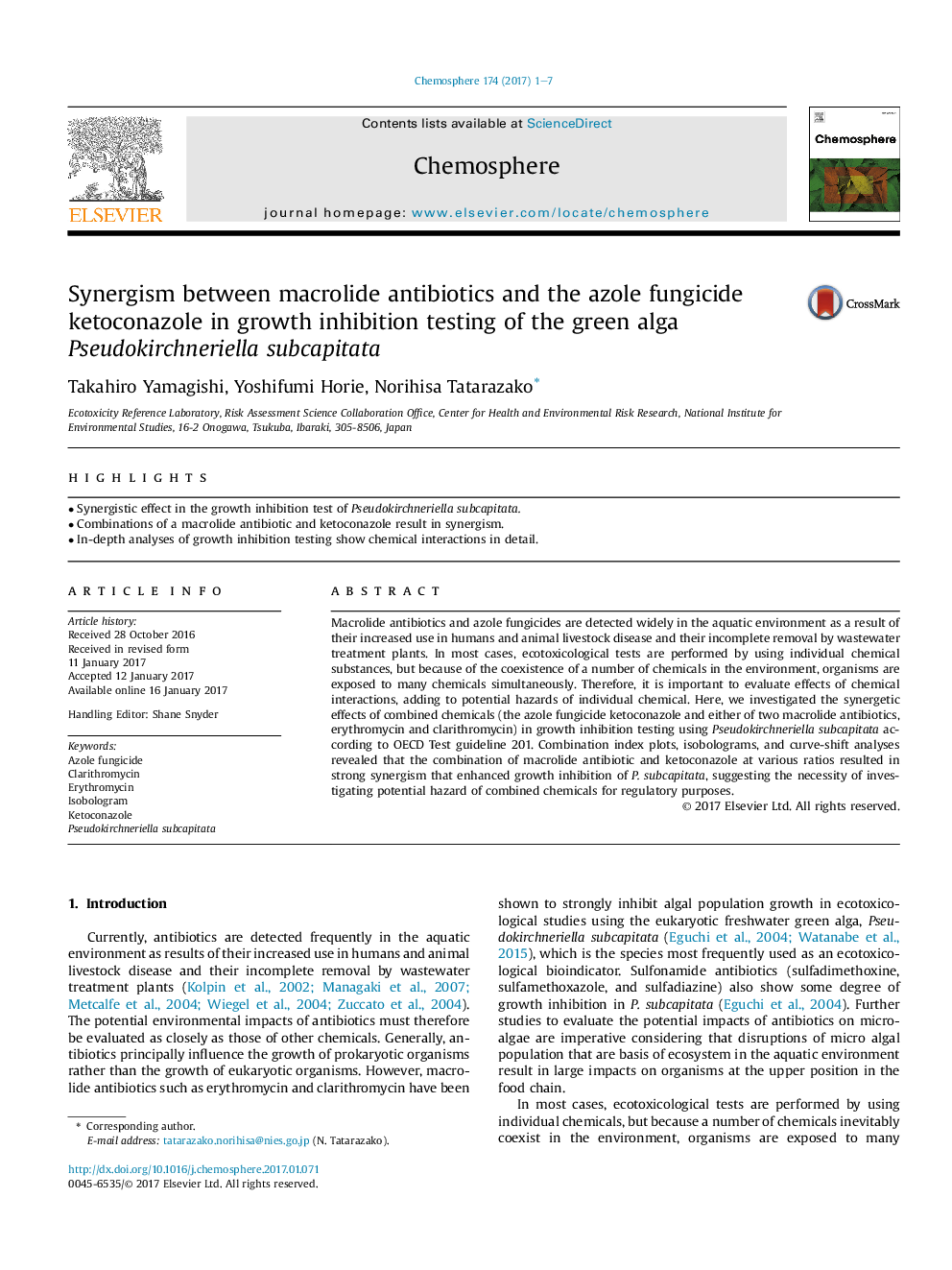| Article ID | Journal | Published Year | Pages | File Type |
|---|---|---|---|---|
| 5747317 | Chemosphere | 2017 | 7 Pages |
â¢Synergistic effect in the growth inhibition test of Pseudokirchneriella subcapitata.â¢Combinations of a macrolide antibiotic and ketoconazole result in synergism.â¢In-depth analyses of growth inhibition testing show chemical interactions in detail.
Macrolide antibiotics and azole fungicides are detected widely in the aquatic environment as a result of their increased use in humans and animal livestock disease and their incomplete removal by wastewater treatment plants. In most cases, ecotoxicological tests are performed by using individual chemical substances, but because of the coexistence of a number of chemicals in the environment, organisms are exposed to many chemicals simultaneously. Therefore, it is important to evaluate effects of chemical interactions, adding to potential hazards of individual chemical. Here, we investigated the synergetic effects of combined chemicals (the azole fungicide ketoconazole and either of two macrolide antibiotics, erythromycin and clarithromycin) in growth inhibition testing using Pseudokirchneriella subcapitata according to OECD Test guideline 201. Combination index plots, isobolograms, and curve-shift analyses revealed that the combination of macrolide antibiotic and ketoconazole at various ratios resulted in strong synergism that enhanced growth inhibition of P. subcapitata, suggesting the necessity of investigating potential hazard of combined chemicals for regulatory purposes.
